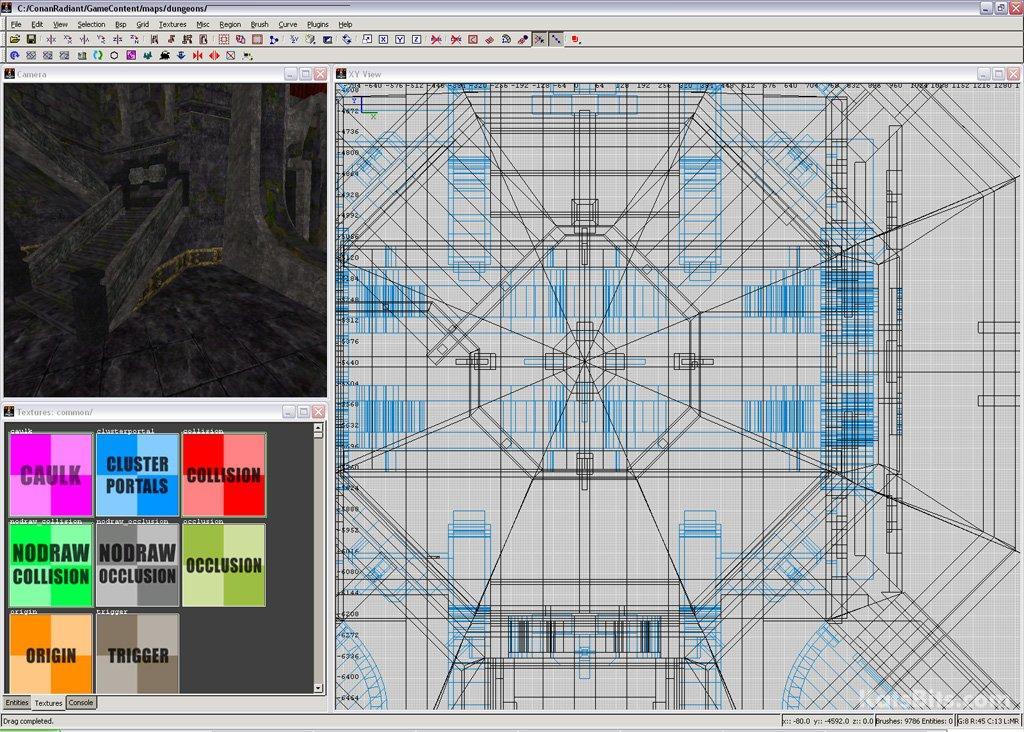Conan: Hyborian Adventures, the making of – Interview
Conan dungeon design, content creation and conversation. Following on from our previous chat I thought it would be interesting to track down Chris ‘MrLycon’ Jensen and catch up with events post (after) his work on Age of Conan: Hyborian Adventures. In the previous chat he mentioned that Funcom had used GTKRadiant during the production process of building the world and levels for the game. So aside from the general chit-chat below about Funcom itself and what it’s like being in the industry, he gives an interesting insight into the realities of game development.
kat: We never really talked about this the last time, so, lets talk a little about you. What’s your role at Funcom? What did you do during the development of Conan?
Mr Lycon: My title is "world designer", but it’s basically the same as a "level designer". During the production of Conan I touched many aspects of the art process, from textures and models to level design. My main focus is and have always been level design though, this is where I design, block-out, detail and light the level used in game.
I’ve also did some managing. As we never had a "level designer" (someone solely dedicated to that process), during the last year or so of production on Conan I was effectively the level design ‘technical co-ordinator’ where I had to take care of technical design of the project and the mentor of a few team members; as we never had anyone in charge of ‘level design’, there was never anyone managing the level designers from a profession perspective, we had producers who told us what to do but never anyone with specific level design experience.
kat: A project ‘lead’? You mentioned above about having to ‘train’ the guys to use the tools?
Mr Lycon: In the role of ‘technical level co-ordinator’ I helped our programmers to design technology like the portal system we used as our culling system in the levels; I had a lot of experience with portals from other engines so this really helped them (that was only one of many things I helped them design and implement). I also trained other team members in the use of this technology once it was working. At the beginning of the project though, we used Radiant to make a lot of the geometry and as most of the level designers at Funcom had never used Radiant before (quite surprisingly) I had to do a few training sessions with the tool.
kat: Did the use of Radiant influence the ‘feel’ of the underlying technology?
Mr Lycon: Yeah I guess, although towards the end of the project Radiant was used less and less due to delays in the project, once we realised we had more time we did more and more of the level design completely in 3DS Max; I still used Radiant as a block-out tool at the end though, I find it much quicker to block out and test a design this way.
kat: Does that mean that you’re still doing things like ‘portals’ in Radiant even though you’ve moved to Max?
Mr Lycon: Portals are all placed in Max as planes with a specific material which, during export, are converted to a "real" portal. Radiant is purely for game play testing really; spending a lot of time on a level before you know it works is not very efficient, so you have to work on the game play and to get a feel of the generic geometry in the level right beforehand, see if it feels good. Many of the level designers went completely 3DS Max at the end, but I still find using Radiant much quicker for this; we wrote a custom importer so things like scale weren’t an issue on this project; we actually also exported a few scale objects (characters) to MD3 to be used as scale reference in Radiant.





